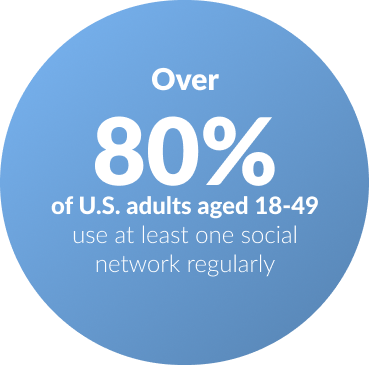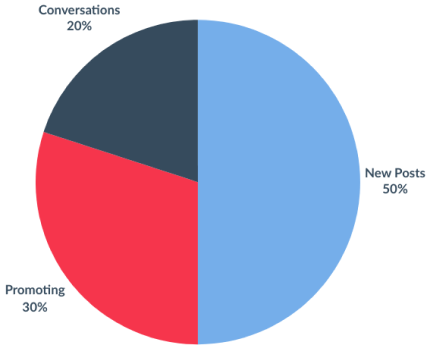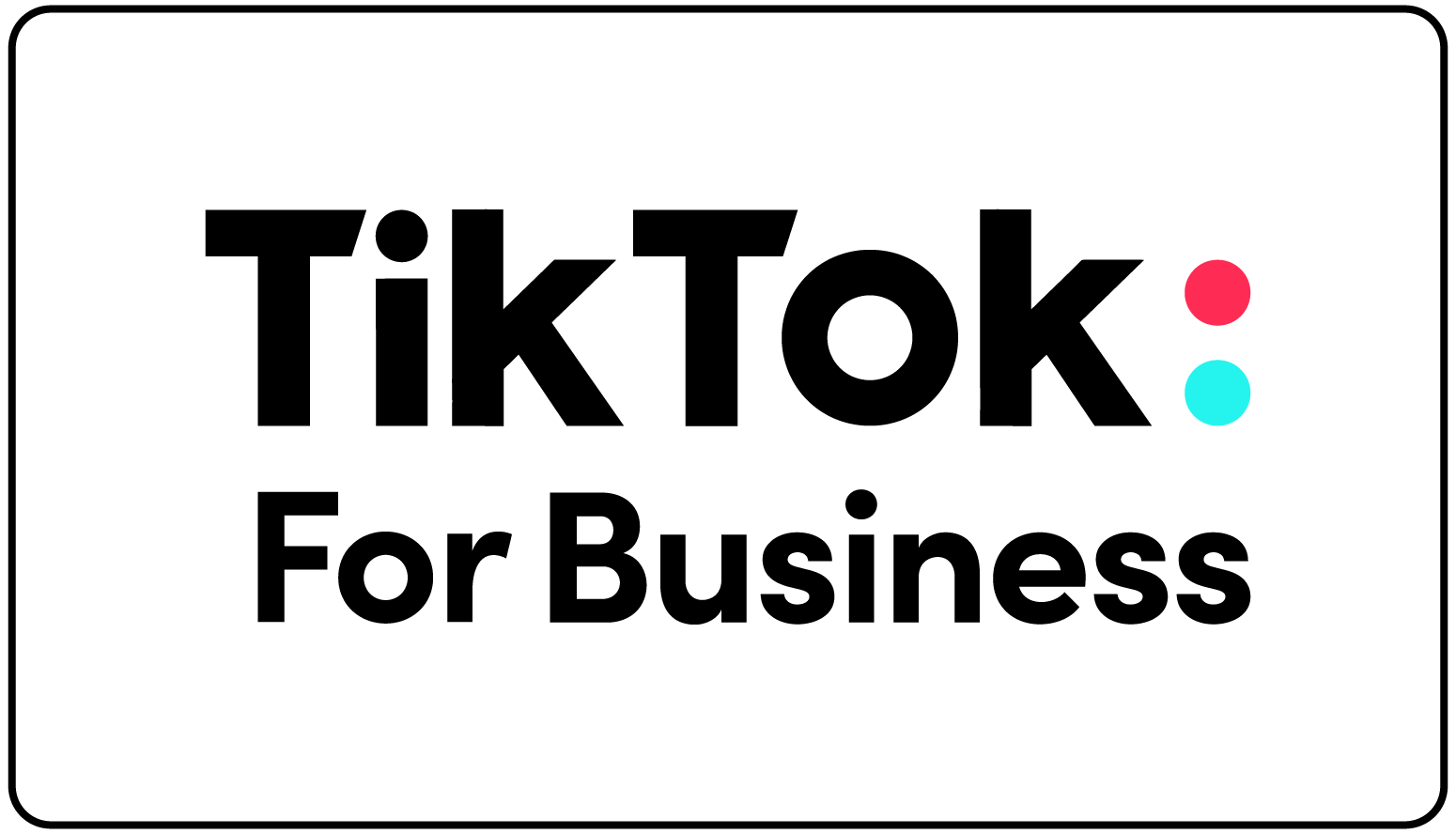Creating a Winning Social Media Marketing Strategy for Your Brand
Have you ever wondered why certain brands become social media titans while others scarcely make a dent? It’s like watching a group of marathon runners. Some are equipped with top-notch gear and expert coaching, breezing through the race effortlessly. Others need help to keep up, despite their best efforts. The secret lies in understanding how to create a social media marketing strategy for your brand.
Without the right social media marketing strategy, even high-quality content might not get the traction it deserves on platforms filled with users worldwide. But when done, right? You’ll have more than just ‘likes’ and shares – you’re looking at increased brand awareness, lead generation, and customer loyalty that drive business growth.
So, are you all set to plunge deep into everything social? We will craft an effective strategy plan – from setting clear goals that align with your business objectives to leveraging social media audience data for strategic decisions. Let’s get started!
Understanding Social Media
Marketing Strategy
The emergence of social media has revolutionized marketing. It’s hard to deny the potential of an effective social media marketing strategy, and it’s about more than just having a presence on these platforms but crafting an approach that brings your brand to life in the digital sphere.
The Role of Social Media in Modern Marketing
According to Pew Research Center data, over 80% of U.S. adults aged 18-49 use at least one social network regularly. This makes media marketing strategy integral for effectively reaching this vast audience base.
With so many people active on these platforms daily, ignoring social media could mean missing out on connecting with millions who might be interested in what you offer as a brand.

Benefits of a Well-Defined Strategy
A well-defined social media marketing strategy considers your business goals and works towards achieving them through tailored content. Such strategies shape your actions on each platform while providing consistency throughout all channels – something audiences appreciate immensely.
This doesn’t only enhance customer relationships but also helps boost awareness around you by leveraging different aspects unique to each channel—be it Instagram’s visually rich layout or X’s (formerly known as Twitter) bite-sized communication style.
The goal should be to develop a plan that can adjust and expand with the continually changing nature of social media, keeping your mark significant consistently.
Setting Clear Goals for a Realistic Social Media Strategy
Beginning a social media plan with no set objectives is akin to starting on a journey without knowing where you want to go – it may be enjoyable, but the chances are that you’ll just end up going around in circles. So, let’s get into the specifics of setting practical social media goals that align with your business objectives.
Aligning Social Media Goals
with Business Objectives
The first step to success in any marketing plan, including social media marketing, is alignment between your company-wide targets and individual campaign objectives. To do this effectively, make sure your social media goals are SMART: Specific, Measurable, Achievable, Relevant, and Time-bound.
This means rather than saying, “We want more followers,” aim for something like “Increase Instagram follower count by 15% over the next quarter.” This goal is specific (Instagram followers), measurable (15%), achievable (with some effort), relevant (it’s linked to increasing brand awareness), and time-bound (next quarter).
Remember that it’s essential to not focus only on vanity metrics such as likes or follows but also to spend time on factors driving business growth – lead generation or customer service improvements can play pivotal roles here.
A well-defined set of aims directs your team’s efforts while allowing them an opportunity for celebration when these are met. Remember – what gets measured gets managed.
Identifying Your Target Audience on Social Media Platforms
Determining who your target audience is forms the backbone of any effective social media strategy. It’s not just about knowing their age or location but understanding their needs, wants, and behaviors.
Leveraging Audience Data for Strategic Decisions
A deep dive into Pew Research data reveals that 73% of 50 to 64-year-olds use at least one social media site. This information could be invaluable if this demographic falls within your target audience spectrum. Knowing where they hang out online lets you meet them right there.
Social networks are a treasure trove of user insights waiting to be tapped. From gender distribution across different platforms to peak usage times, these nuggets can guide your content strategy and platform selection.
To start with, jot down what you already know about your customers. Are they predominantly male or female? What’s their average age group? Which region do they belong to?
- 🤓 You need detailed customer personas – fictional representations based on actual data reflecting various user types likely interacting with your brand.
- 📊 Gather quantitative (demographics) and qualitative (motivations) data using surveys and interviews.
- 👀 Lastly, keep an eye on trends in engagement rates by demographics – patterns will emerge to help refine personas further over time.
This isn’t a ‘set it and forget it’ exercise. With changing market dynamics & consumer behavior influenced by factors from global events to seasonal shifts, revisiting & updating these profiles should form part of regular operations. If your business is already in-market, talk to your customers or clients directly–there is no substitute.
By thoroughly comprehending your target crowd, you’ll be in an ideal situation to adjust material that reverberates with them and make sound choices concerning platform selection. Remember – knowing who your audience is is half the battle won in creating an effective social media strategy.
KEY TAKEAWAY
Knowing your audience is key to a killer social media strategy. Dig into data like demographics and usage times to make strategic decisions on content creation and platform choice.
Choosing the Right Social Media Platforms for Your Brand
Selecting where to establish your brand presence online can feel like navigating a maze. The key is understanding the unique strengths of different social channels.
Strengths of Different Social Channels
Social media platforms vary widely in user demographics and benefits, making some more suited to your brand than others. Let’s dive into some popular choices:
Meta

This platform boasts over 2 billion active users worldwide, providing a vast audience pool across age groups and interests. Ideal for creating community pages and targeted ads, having the best digital ad platform for direct response this side of Google.
X (formerly Twitter)

Great for keeping your brand top of mind. Posting multiple times a day here is the norm and will not be seen as over-the-top. X, like TikTok, also tolerates an edgier brand voice, which is helpful for brands with a higher risk tolerance in their messaging.

LinkedIn’s business-focused network is unbeatable if you seek professional engagement or B2B interactions.

A visual-first platform, ideal for stunning product photos. Instagram also allows you to sell directly on the platform via its Shop tab and shoppable posts.
TikTok

A hit among Gen Z, TikTok offers immense potential for viral content through its engaging short-form videos – perfect to increase brand awareness with a younger crowd quickly.
Choosing wisely from these social networks requires clear insight into who your customers are and what they need from you. With careful consideration of factors such as customer service needs or advertising spend capacity, businesses can get valuable insights that guide them toward the most effective strategy planning process.
When choosing which social profiles best fit your company, an important aspect is examining how consumers expect brands to interact on each platform, whether via influencer marketing on Instagram or user-generated content campaigns on Meta.
The right mix will depend on your target audience and align closely with specific social media marketing goals businesses set out at the beginning – increasing followers (vanity metrics), driving traffic back to the website (lead generation), etc. Here’s another valuable guide to help you form your marketing plan.
Remember, spreading yourself too thin across multiple platforms without a clear focus can dilute the effectiveness of your efforts. Prioritize quality over quantity – it’s better to excel on one or two platforms than merely exist on all.
KEY TAKEAWAY
Know how consumers expect you to interact with them on each platform, whether via influencer marketing on Instagram or user-generated content campaigns on Meta.
Defining Your Brand Voice and Messaging on Social Media
Your brand voice is the unique personality your business showcases to its audience. It’s more than just words; it also encompasses tone, style, and values. In essence, your brand voice promotes your brand in a way that resonates with users.
Comprehending your organization’s character is essential to create a solid brand identity. Are you fun-loving or serious? Modern or traditional? Defining these traits will help create consistency across all social media platforms. Work you may have (hopefully) already done on your company’s vision, mission, and core values can help here.
🗣️ Aligning Brand Voice with Audience Expectations
An effective brand’s voice speaks directly to its target market’s preferences and expectations. To effectively reach the right target market, brands must know their audience’s demographics, including age and cultural backgrounds.
A mismatch between your messaging and customers’ expectations can lead to disengagement. For example, if most of your followers are millennials looking for innovative tech solutions but receive corporate-style communications instead – they may disconnect from the conversation altogether.
💬 Crafting Consistent Messages Across Platforms
The power of consistent messaging should be considered when defining a social media strategy. When posts echo the same message across various channels – like Meta, LinkedIn, and TikTok marketing– audiences begin recognizing them immediately.
This does not mean every post needs identical wording. Instead, think about how different aspects of each platform can enhance one unified message.
💌 Tailoring Tone for Each Platform
Social networks differ significantly: X thrives on quick wit, while LinkedIn leans towards professional insights; Instagram is visually led, whereas Meta favors engaging stories shared amongst friends. Understanding these nuances allows brands to promote their brand effectively and engage in authentic conversations with their followers.
The key takeaway here? Developing a unique, consistent, and engaging brand voice is essential for creating a successful social media strategy. Remember: your audience wants to interact with brands that seem human, not corporate machines.
KEY TAKEAWAY
Understanding your brand’s unique personality and aligning it with audience expectations is key to creating a solid social media presence.
Remember: people want to connect with brands that feel human. 🫶
Creating Engaging Content for Social Media
Social media thrives on engagement. It’s the lifeblood of any successful social media strategy. What content will drive engagement with your followers? The key lies in understanding what sparks interest and prompts interaction among your followers.
The first thing to remember is that not all content is created equal. Visuals play a pivotal role in drawing attention and fostering engagement.
The Role of Visual Content in Engagement
A picture can say more than words ever could – it’s an adage but one that holds even today. Adding visual elements to your posts helps break up text-heavy feeds, making them easier to digest and more appealing.
You don’t need a high-end camera or expensive software; simple graphics tools like Canva can help you produce visually striking images relevant to your message without breaking the bank.
Besides static visuals, consider using videos too. HubSpot says video generates 1200% more shares than text and image combined.
This comprehensive guide offers further insights into creating engaging visual content for platforms like Meta or TikTok.
In conclusion, never underestimate the power of good-quality visuals when you create social media marketing strategies. They’re essential for driving user-generated content, encouraging users worldwide to interact with brands on various networks daily, and ensuring their inclusion wherever possible.
Did you know that video content on social media sparks 1200% more shares than text and images combined? Let’s make your feed pop with visuals.
#SocialMediaTips
Monitoring and Analyzing Performance
A solid social media strategy isn’t just about posting content. It’s also about understanding how that content performs. Monitoring and analyzing your performance helps you gauge whether your efforts are paying off or if there is room for improvement.
Tools for Performance Analysis
The digital landscape provides a plethora of tools to help assess your performance. Two standout examples include Buffer and HubSpot. These platforms offer insights into engagement rate, follower growth, and post reach.
These ‘media metrics’ or ‘social media metrics’ provide invaluable data to guide your future strategies. By regularly tracking these numbers, you’ll see what type of posts resonate most with your audience – do they love behind-the-scenes snapshots? Or maybe they prefer informative infographics?
This monitoring process allows brands to pivot their approach based on real-time feedback from the people they’re trying to connect with their followers.
Beyond just tracking likes and shares (the so-called “vanity metrics”), these tools allow small or large businesses to dive deeper into user behavior. For instance, Buffer’s analytics can give valuable insights into the best times for posting based on when users engage most actively, saving both time and advertising spending in the long run.
Dedicated software like HubSpot goes even further by integrating customer service capabilities alongside marketing ones – creating a seamless experience between teams within an organization while keeping all conversations tracked under one roof.
- Metric #1: Engagement Rate – This shows how much interaction each post gets relative to reach/ impressions made.
- Metric #2: Follower Growth – This measures how your audience size changes over time. Rapid growth may suggest that your content resonates well with the audience.
- Metric #3: Post Reach – This tells you how many unique users have seen your post, indicating brand awareness among social network users worldwide.
To wrap things up, keeping an eye on and dissecting performance isn’t just a task to check off. It’s pivotal for continuous growth and success.
KEY TAKEAWAY
It’s not just about posting and hoping for the best. Make informed decisions on where to focus more efforts or when to change course entirely based on actual data from your audience.
Driving Traffic and Generating Leads through Social Media Marketing
Social media has the power to do more than just increase brand awareness. It can also drive traffic to your website and generate leads. Let’s explore how to use social networks to drive website traffic and obtain leads.
Lead Generation Techniques on Social Media
The first step in lead generation is attracting users worldwide to your brand’s social profiles. This means creating engaging, shareable content that provides valuable insights about your products or services.
A great way to achieve this is by encouraging user-generated content, which gives potential customers a real-world glimpse of what you offer while simultaneously promoting engagement on your page.
In addition, offering exclusive discounts or promotions via social accounts often results in increased follower counts and shares. Not only does this boost visibility, but it also creates an incentive for users to visit your site – driving traffic right where you want it.
Sprout Social, among other tools, offers excellent features that help monitor the effectiveness of such strategies, making adjustments easy based on real-time data.
Tapping into Influencer Marketing
If there’s one trend dominating today’s marketing landscape like no other – it’s influencer marketing. Partnering with influencers whose followers match your target audience demographic drives business and serves as an effective form of advertising spending.
An endorsement from a trusted figure within their community persuades people more effectively than any ad could ever hope to. When savvy companies promote brands, they almost always partner with influencers across platforms – Meta-style posts or TikTok-like short videos.
Want to turn social media traffic into leads?
Don’t forget the power of exclusive offers. Plus, consider tapping into influencer marketing for an extra boost.
#SocialMediaStrategy #LeadGeneration
FAQs concerning How to Create a Social Media Marketing Strategy for Your Brand
How do you create a social media brand strategy?
You start by setting clear goals, identifying your target audience, and choosing the right platforms. Then, define your brand’s voice and messaging, create engaging content, analyze performance regularly, and leverage these insights to drive traffic and generate leads.
What are the 7 steps to creating a social media strategy?
The seven steps include:
- Goal setting
- Audience identification
- Platform selection
- Defining your brand’s voice and messaging
- Crafting compelling content
- Monitoring results using metrics analysis tools like Buffer or HubSpot
- Generating leads through strategic marketing tactics.
How to create a social media marketing plan for your business?
Create it by aligning with business objectives, understanding who your audience is on each platform, and building an authentic brand voice that resonates with them. Create meaningful content that drives engagement while consistently measuring success via key performance indicators (KPIs).
What is the 50-30-20 rule for social media?
This rule suggests spending 50% of the time creating new posts, about 30% promoting those posts across different channels, and around 20% on the conversation – responding directly to comments from followers or starting discussions.

Conclusion
So, you’ve learned how to create a social media marketing strategy for your brand. You’re now armed with the knowledge of setting clear, measurable goals that align directly with your business objectives.
You understand the importance of identifying your target audience on different social platforms. This will guide content creation and ensure you’re engaging users effectively.
Your brand voice should resonate with this audience, consistently promoting core values across all channels. Recognize that it’s not just about having a digital profile; building meaningful connections is also essential.
Acknowledge that content is king, but engagement reigns supreme in digital marketing. Use visual elements wisely to increase interactions – shares, likes, comments – these aren’t vanity metrics!
Finally, don’t forget to monitor and analyze performance as they give valuable insights into what works (and doesn’t) for refining strategies over time. Be ready to adjust sails based on data-driven decisions rather than hunches or trends alone.
Now go ahead—dive headfirst into the world of social media marketing!




